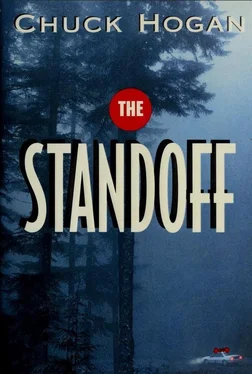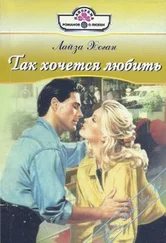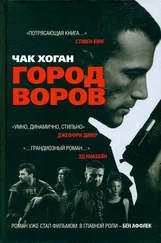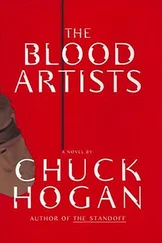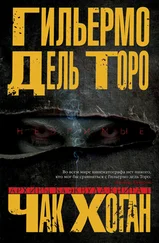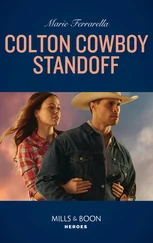Banish could see Blood bracing there before him.
“The newspapers are right,” Blood said. “You are dangerous.”
There was something here. Something in the Indian’s face. Banish discovered the cup of coffee in his hand and tossed it into a nearby barrel. “I’ve got a couple of minutes while I change,” he said. “Why don’t you give me the particulars.”
Blood nodded and walked with him across the clearing.
Blood went and stood by the bed. Banish closed the trailer door and moved to his suitcase, set on top of the table. Blood looked across to where the mirror had hung and saw only a rectangle of wall darker than the rest.
Blood had been buying time on the stroll over, secretly having trouble figuring out where to begin. This was important.
“The first two happened before I took office,” he began. “A sixty-eight-year-old Indian found on a county road after attending a powwow down in Crater, and then a floater washed up on Shoot River. He was a sixteen-year-old who had been missing for a few months, and was pretty badly decomposed, not much left.”
Banish had his back to him, rummaging through clothes. He said, “What’s the river like?”
“Wide and rough. Can be treacherous, depending on the season. Runs right through Huddleston. There have been some drownings in the past.”
Banish pulled out a pair of pants with the belt already looped. “Just tell me about the deaths you have the most information on.”
“Right,” Blood said, nodding. He had to present this clearly. “That’d be the last two. This was after my ears had perked up, and other people’s too. They — Indians around here — by then were talking amongst themselves. Speculation about a serial killer of Indians.”
“Hogwash,” Banish said, pulling out a shirt.
Blood nodded, “That is hooey. I told them that’s not how a killer like that works, but they’re just scared. The second-to-last was a twenty-two-year-old male, last name of Kowes, late-generation Shoshoni. Missing for eight days, found floating in shallow water — also in Shoot River. Last seen at a party down near Huddleston Center. Left there late and was headed home when he snagged a tire on a railroad tie while crossing the tracks out by Potter’s potato farm. That amounts to what we know for sure. From there, the official speculation is that, afraid of being caught DWI, he abandoned his car on the edge of the tracks and hiked a mile up to the river. The boy was in good shape, an athlete, and may have thought he could swim the Shoot and walk home from there. It would have amounted to a shortcut.”
“Blood-alcohol?”
“Point-one-seven. The boy did have a good shine on.”
“But people who knew him say he was too smart to try and swim the river,” Banish said, “drunk or not.”
Blood nodded. “His parents think he was forced in.”
Banish pulled his wallet from his back pocket and tossed it onto the bed, where it flopped open, then stepped into the bathroom, fresh clothes in hand. “I’m listening,” he said, turning the corner.
Blood cleared his throat, not used to talking so much at a time. He wanted to be sure to leave nothing out.
“More is known about the last one. A seventeen-year-old male, name of Darkin. Last seen at one of the local hangouts in Huddleston. Called the Bunker, a small cinder-block place set back from the road. Used to have a few swastikas decorating the back of it, been painted over since.”
“The bar Ables was pinched at,” Banish said from the bathroom. The door was open. “What the hell would an Indian be doing in a place like that?”
Blood looked at the brown leather wallet on the bed. It was worn, its faint gold stitching pulled. He could see, poking out of one of the deeper pockets, the top border of a photograph. Blood took a step closer to the bed, keeping an eye on the door.
“That is unknown,” he said. “Maybe to meet some others, there being strength in numbers. Maybe to meet a girl. Anyway, he arrived alone by taxi after midnight, stayed less than an hour. Two men at the door say they saw him leave around one, one-thirty, again alone. It’s a farm road there, tarred but unlit, a fairly main drag south of town. A motorist came across the body more than a half mile away from the Bunker. That was some time shortly after two.”
Banish’s voice said, “What did the doormen look like?”
“Shaved bald, suspenders, black boots.”
Banish said, “These are the people who place this Indian’s time of departure. These are the last people to see him alive.”
“We have no independent corroboration. We’re still trying to track down some of the patrons of the bar.”
Banish said, “Go ahead.”
Blood checked the bathroom door again. “First of all,” he said, reaching across the bed for the wallet, “why would this boy want to walk home four miles at that time of night?” Blood slid the photograph most of the way out. “It was the middle of February and twelve degrees. He told the cab driver who dropped him that he would be calling later for a ride home. He never did.” Blood lingered a moment on the wallet-sized portrait. It showed a trimmer Banish, his face thinner and ten years younger, wearing a dark suit and wide tie and standing with his hand on a chair where his wife sat, her brown hair long and flat, skirt and stockings conservative — and standing at her shoulder, smiling for all she was worth, their daughter, a dark-haired girl of no more than ten or twelve. “Nine dollars in his back pocket,” Blood said, quickly sliding the photograph back inside its pocket and setting the wallet open again on the bed, “more than enough for taxi fare. Coroner filed official cause of death as blunt head trauma of unknown cause, but I asked him to take a closer look at that, it seeming a little too speculative to me, and he came back with a fractured skull and other injuries jibing with hit-and-run.”
Banish didn’t answer right away and Blood took a step farther back from the bed. “Which side of the road was he found on?”
Blood answered, “Dead center of a two-lane tar road. Spread out in the middle of it.”
“Blood-alcohol?”
“Point-one-two-five.”
Another pause. “What did the body look like?”
“Brian Kearney was first on the scene that morning. He said that it was his feeling immediately, first thing he thought of, that the death had occurred someplace else. That it looked like a body that had been moved. Now, you know Brian. He’s a rookie and his mouth gets out in front of his mind on occasion. So I checked these things for myself.” Blood ticked off each point with the fingers of his right hand. “No automobile parts on the road. No skid marks, no glass shards. All the driveways and byroads are dirt around there, and plenty of tracks on either lane, but no dirt crossing the center strip within thirty yards. And then this. When he was found, the boy had two T-shirts on under his jacket, both rolled up from his waist to his armpits, and his back all scraped up. Like he had been dragged there. Some say a car could do it, but his back would have been torn to shreds on that tar. And then the next day, Brian comes over to me on the sly. He tells me that Moody talked him out of it. The T-shirt angle got left off the official report entirely.”
Blood heard a faucet running, then turned off. “The first one, Kowes,” Banish said. “Missing for eight days. What about his car?”
“Found the next day by the railroad tracks and impounded as an abandoned vehicle.”
“Parents weren’t notified?”
“It was registered in the boy’s name. I took his father down there myself a week after the body washed up and we found it tucked back behind some others in the tow yard. Wallet empty on the floor in front, contents scattered on the front seat, the dash, and both floorboards. Also clothes. Also shopping receipts, also check stubs.”
Читать дальше
